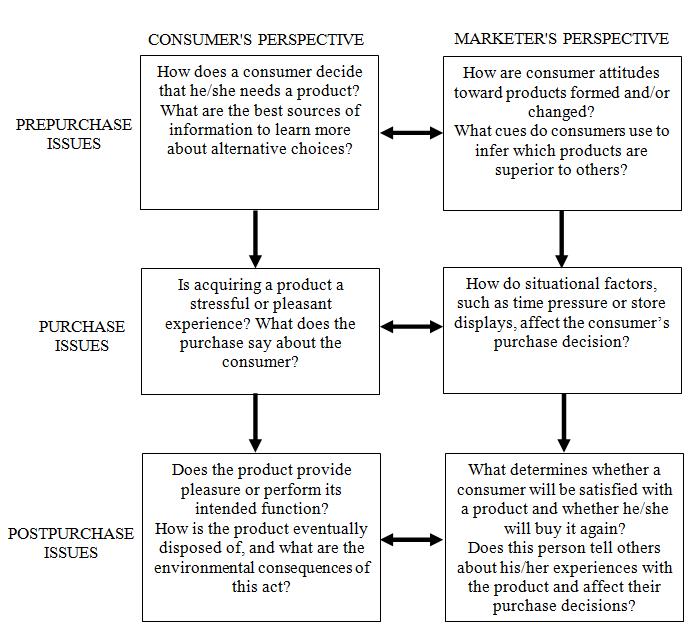Solomon Model of Comparison Process explains some of the issues that are addressed during each stage of the consumption process (Prepurchase issues, Purchase issues, Postpurchase Issues). The ‘exchange’, in which two or more organizations or people give and receive something of value, is an integral part of marketing. He also suggested that consumer behavior involves many different actors. The purchaser and user of a product might not be the same person. People may also act as influences on the buying processes. Organizations can also be involved in the buying process. Much of marketing activity, they suggest, concentrates on adapting product offerings to particular circumstances of target segment needs and wants. It is also common to stimulate an already existing want through advertising and sales promotion, rather than creating wants.
The value-expressive function is employed when a consumer is basing their attitude regarding a product or service on self-concept or central values. The association or reflection that a product or service has on the consumer is the main concern of an individual embracing the value expressive function…………. The knowledge function is prevalent in individuals who are careful about organizing and providing structure regarding their attitude or opinion of a product or service………….. Incoming messages are filtered down two possible paths–latitudes of acceptance and latitudes of rejection. If the new information is similar to existing information, the consumer follows the latitude of acceptance. In contrast, if the information is disparate, the consumer follows the latitude of rejection……………..The experiential hierarchy of effects is defined by an affect-behavior-cognition processing order. In this scenario, the consumer is influenced to purchase based entirely on their feeling regarding a particular product or service. Cognition comes after the purchase and enforces the initial affect. Emotional contagion is common in attitudes formed by the experiential hierarchy of effects (Solomon, 2008).
A marketer can change a consumer’s knowledge function based attitude by using fact-based comparisons and real-world statistics in the message strategy. Vague and non-relevant marketing campaigns are ineffective against a knowledge attitude audience.
